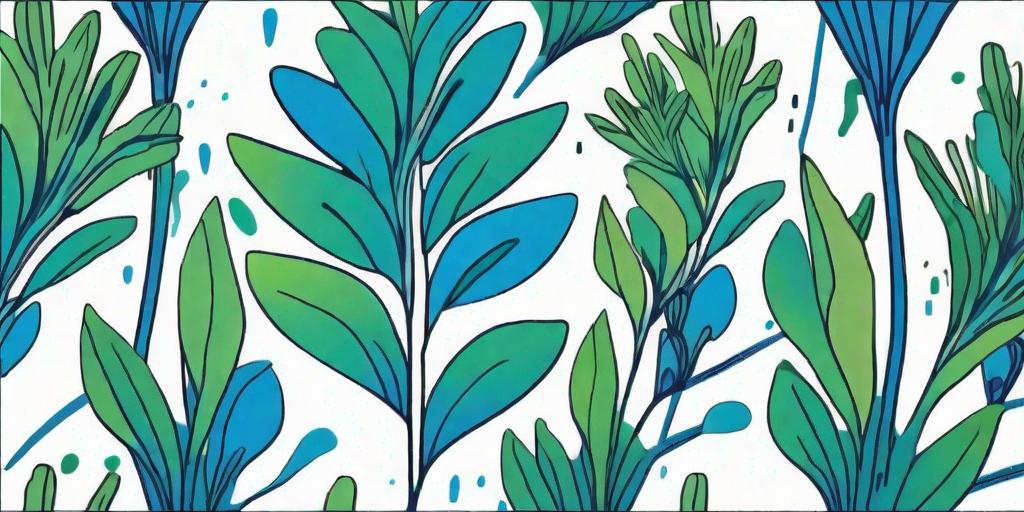
If you've ever wondered how your ancestors managed to create vibrant blue dyes without the help of modern chemistry, you're in for a treat. The secret lies in a humble plant called woad. This cheeky little plant has been the unsung hero of the dye world for centuries, and it's about time we gave it the recognition it deserves.
The History of Woad
Woad, or Isatis tinctoria, if you want to get all Latin about it, has been used as a source of blue dye since the Neolithic period. That's right, folks, our cave-dwelling ancestors were rocking the blue long before it was cool. The ancient Egyptians used it for their royal linens, and the Celts used it for their war paint. Talk about a plant with a colorful history!
But why was woad so popular? Well, it was one of the only sources of blue dye available in Europe until the late Middle Ages. It was also easy to grow and harvest, making it a staple in many a medieval garden. Plus, let's face it, who doesn't love a good blue?
The Science of Woad
Now, you might be wondering how a plant can produce such a vibrant color. The secret lies in a compound called indigotin. When the leaves of the woad plant are crushed and fermented, they release this compound, which reacts with the air to produce a brilliant blue dye.
But wait, there's more! Woad is also a champion of sustainability. Unlike synthetic dyes, which can be harmful to the environment, woad is completely natural and biodegradable. So not only can you create stunning blues, but you can also do it guilt-free. Take that, modern chemistry!
How to Unleash the Power of Woad
Step 1: Growing Woad
First things first, you'll need to get your hands on some woad seeds. These can be purchased online or from a local garden center. Woad is a hardy plant that can tolerate a range of soil conditions, but it prefers full sun and well-drained soil.
Plant your seeds in the spring, about 1 cm deep and 30 cm apart. Water them regularly and watch as your woad plants start to sprout. It's like magic, only real!
Step 2: Harvesting Woad
Once your woad plants have reached maturity, usually in their second year, it's time to harvest. You'll want to pick the leaves while they're still young and tender, as this is when they contain the highest concentration of indigotin.
Be sure to wear gloves during this process, unless you want to end up with blue hands. Although, that could be a fun conversation starter at parties.
Step 3: Making Woad Dye
Now comes the fun part: making the dye. Start by crushing your woad leaves into a paste. This can be done using a mortar and pestle, or if you're feeling particularly medieval, a large stone.
Next, add the paste to a bucket of warm water and let it ferment for about a week. After the fermentation process, strain the mixture and expose it to air. This will cause the indigotin to oxidize and turn blue. Voila! You've just made your own woad dye.
Applications of Woad Dye
So what can you do with your homemade woad dye? The possibilities are endless! You can use it to dye fabric, yarn, paper, and even hair. Yes, you heard right, hair. Who needs a salon when you've got woad?
Woad dye is also great for artists. It can be used to create stunning watercolor paintings, or mixed with a binder to make oil or acrylic paints. Imagine the bragging rights you'll have when you tell people you made your own paint.
FAQs
- Is woad safe to use?
Yes, woad is completely safe to use. However, like any plant, some people may be allergic to it. If you experience any adverse reactions, discontinue use immediately.
- Can I grow woad indoors?
While woad prefers outdoor conditions, it can be grown indoors with the right care. Make sure it gets plenty of sunlight and water.
- How long does woad dye last?
Woad dye is quite durable and can last for several years if stored properly. Keep it in a cool, dark place for maximum longevity.
Conclusion
So there you have it, folks. The secret to vibrant blue dye lies not in a lab, but in a humble plant called woad. Whether you're a DIY enthusiast, an artist, or just someone who appreciates a good blue, woad is a plant worth exploring. So why not give it a try? Unleash the power of woad and let your creativity run wild!
Just remember, with great power comes great responsibility. Use your woad wisely, and always remember to have fun. After all, life's too short for boring colors.















